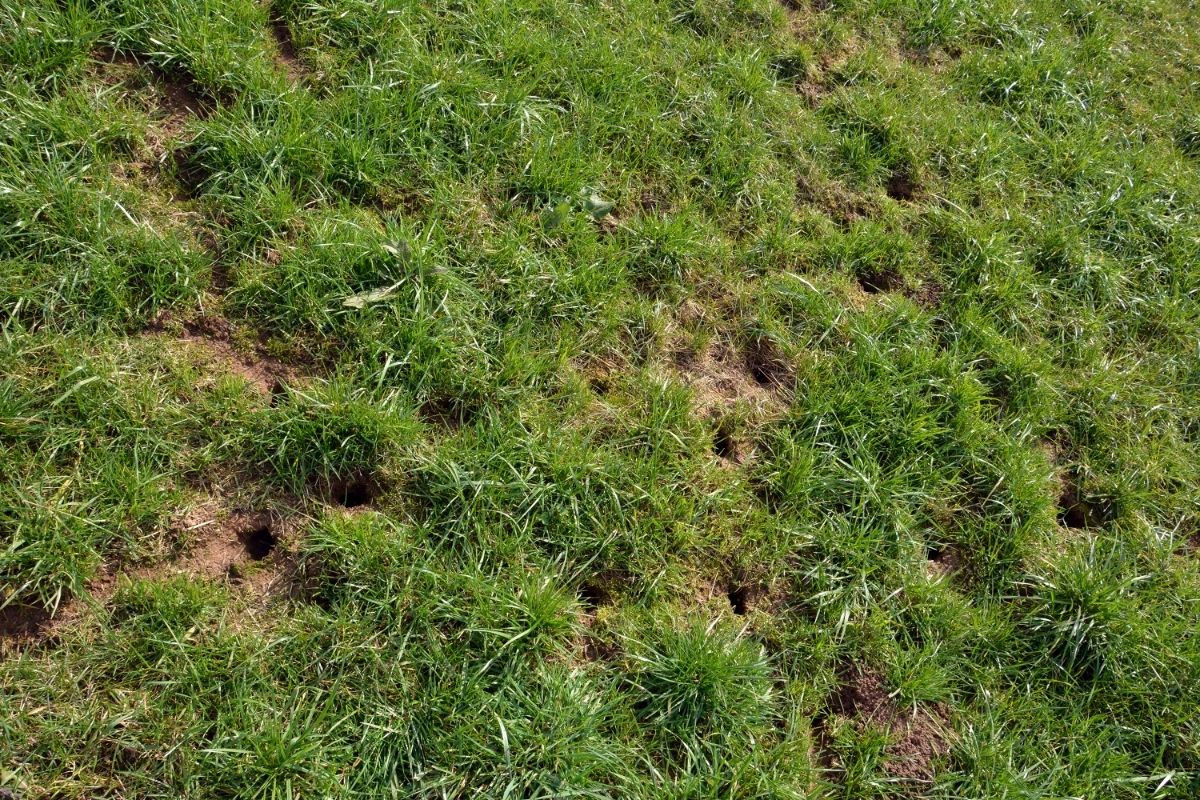It doesn’t matter how hard you try; sometimes, you just can’t keep your landscape looking as on par as you want because there are tiny little critters running around destroying all your hard work.
Most of the time animals ranging from hedgehogs to smaller lawn pests like june bugs create lawn damage by creating annoying holes that make your yard look awful.
If you are struggling with holes in your lawn, we’ve got your back.
In this article, we will discuss some of the main culprits that are well-known for digging in the lawns of homeowners everywhere, and we will provide you with specific ways to tackle each obstacle so you can maintain a healthy lawn.
What Causes Small Holes in Lawns Overnight?
The most likely source for the holes in your lawn is going to be animal activity, especially if these holes appear overnight. If you are waking up in the morning with additional tiny holes covering your lawn, here are a few furry, slimy, or buzzy reasons.
Squirrels
First up is squirrels. Squirrel holes are most common in mulchy areas or garden beds, but they typically don’t dig too far into the soil.
These holes are more like small divots. They will fill with water, creating puddles that can kill small plants.
Solution: There are many options out there that we found work well for keeping squirrels at bay. Some of them include:
- Getting a dog
- Using a sound machine
- Spraying fox scent in the area
- Spraying garlic around the lawn
- Using a fake predator decoy
Moles

Moles are sneaky little creatures that can easily create tons of small, two-inch holes in the middle of the night, then cover them up before you wake up.
You can tell if a shallow hole is there because moles also leave conical mounds of dirt above the ground. Any small mound that you find detracts from a healthy lawn.
If moles are your problem, you will also find that there are long tunnels underneath the surface; this is because they enjoy feasting on grubs and other insects in the dirt, and they travel underground.
Solution: Moles can be a little tricky to get rid of. However, the best solution is to remove their food source or block their access. You can do this by:
- Buying grub killer
- Improving lawn drainage to clear moist soil
- Inserting an underground fence to prevent tunneling
Chipmunks
Chipmunks tend to dig holes in places where they feel comfortable hiding in, such as log piles, near buildings, and close to tree stumps.
These animals frequently dig to hide nuts and other food, as well as to find a place to stay safe.
Solution: The best solution when dealing with chipmunks is by filling these holes in with dirt, stones, or cement so they can’t keep coming back for protection. Other methods include:
- Removing any food sources to discourage digging
- Getting a cat
Insects
Insects always seem to be a problem. For the most part, among insects, bees are usually responsible for creating an abundance of small holes in your yard.
Many species of bees hibernate underground during the winter months in order to stay warm and safe. When spring arrives, these little pests crawl out of the ground, leaving holes in their wake.
Solution: Bees mostly create holes when coming out of the ground after a long hibernation. However, some do burrow or dig holes. Some methods you can use to get rid of them include:
- Applying insect repellent
- Planting bee repellent foliage like bushes and shrubs
- Spraying almond oil or Pyrethrum spray
Snakes
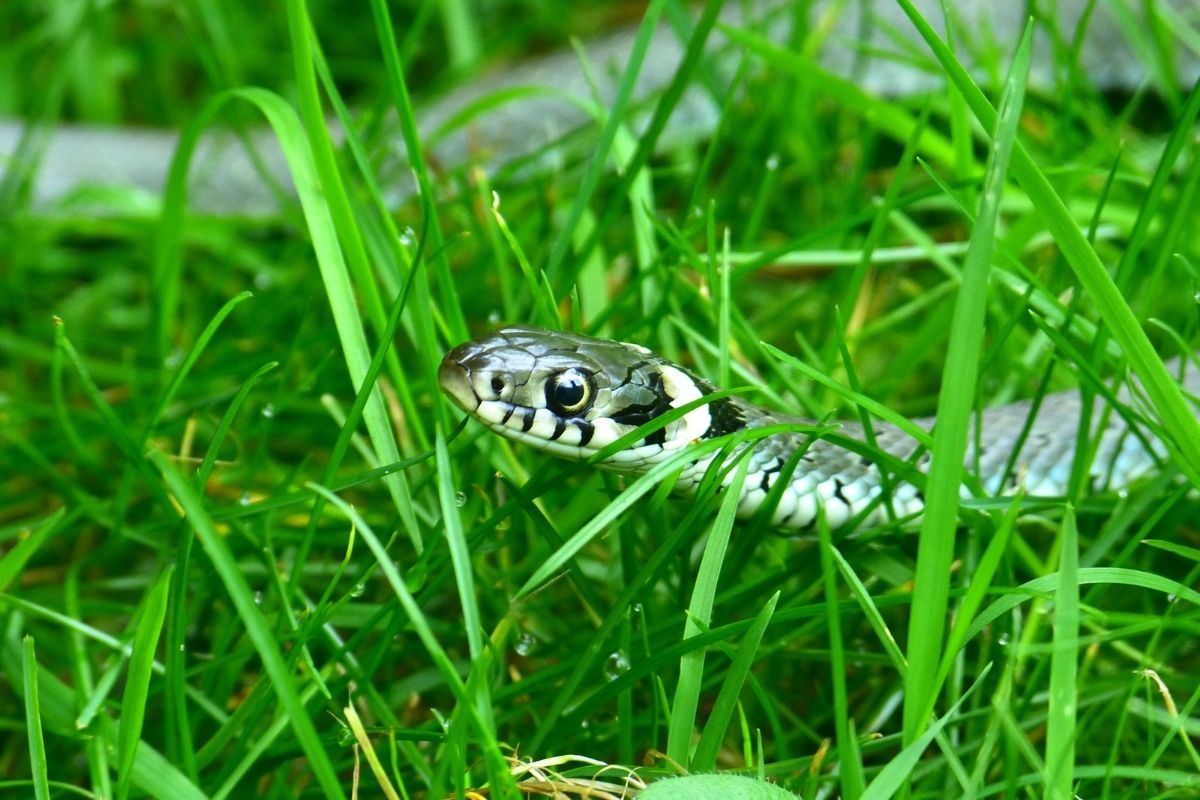
Snakes are a little different than most animals in your yard. They don’t really create holes. Instead, a snake will take control of an already formed, abandoned hole.
Although many people hate these slithering animals, it’s important to know they don’t cause any harm to your grass.
Solution: If you are troubled by a snake hanging out in a shallow nest in your backyard, simply cover the hole with dirt.
Voles
Voles are very small critters that look fairly similar to a hamster. Voles are notorious for creating small openings in backyards that can become a nuisance.
You can usually tell if it’s a vole hole when it’s about 1-2 inches in diameter and contains small round droppings as well as chewed grass nearby.
Solution: Remove all weeds and overgrown grass so there is less room for these creatures to hide. Other methods include:
- Cleaning up clutter
- Spaying hot sauce in the area
- Setting out mouse traps
Armadillos
Armadillos are known for leaving some of the largest backyard holes among lawn pests. These holes are typically 1-3 inches deep and up to 6 inches wide.
Armadillos will dig holes only to feed on the tiny little creatures below the surface, such as ants and grubs.
Solution: Eliminating food sources will be your best bet in keeping armadillos out of your lawn. Other methods include:
- Spraying grub killer
- Treating your yard for insects, especially ants
- Spraying scented deterrents like hot sauce
- Fencing in your yard
Gophers
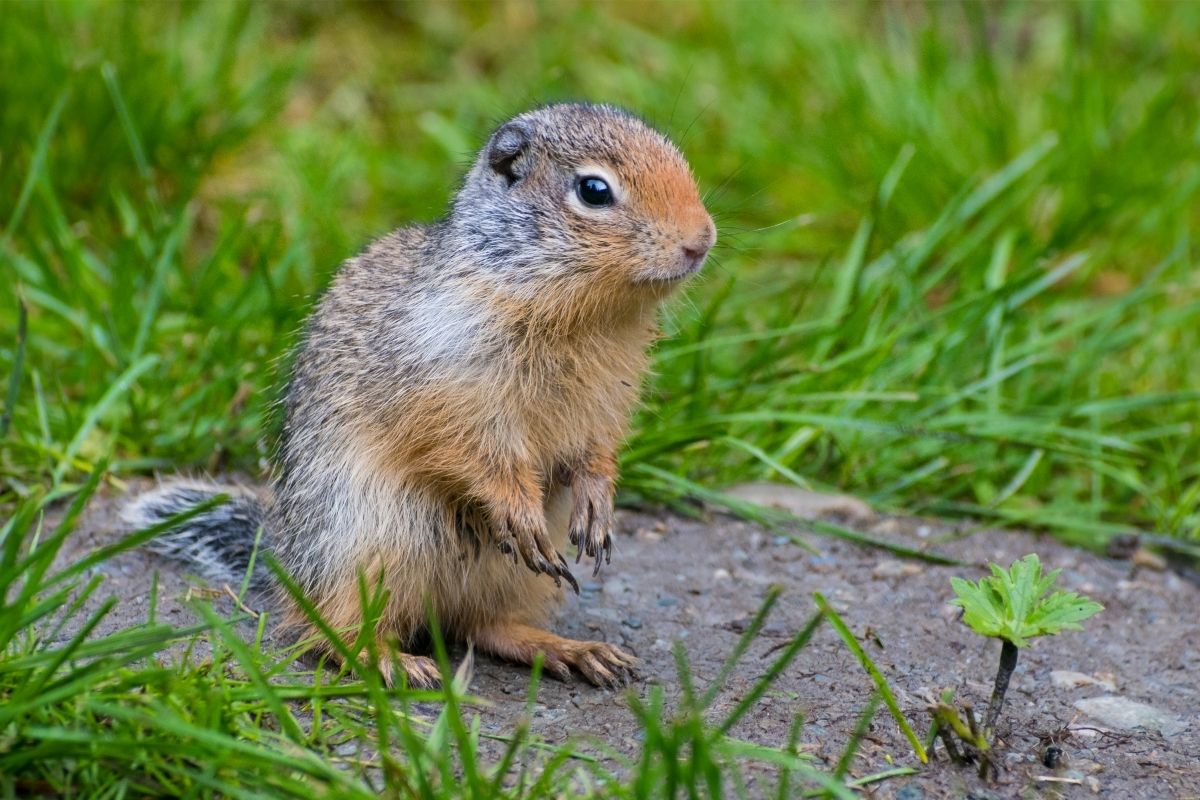
Gophers like to dig deep into the soil, tunneling to eat grass roots. This type of tunneling will cause issues under the surface, including structural damage.
Because gophers are vegetarian, you will almost always find chewed grass blades left behind inside their tunnels.
Solution: The best way to deter a gopher from digging in your lawn is by scaring it with the thought of predators lurking. Other methods include:
- Pouring used cat litter or dog droppings into the exposed holes
- Dropping dryer sheets, mothballs, caster oil, or coffee grounds into the holes (gophers hate these smells)
- Using all-natural gopher repellents like lanter, daffodils, marigolds, or Euphorbia lathyris
Earthworms
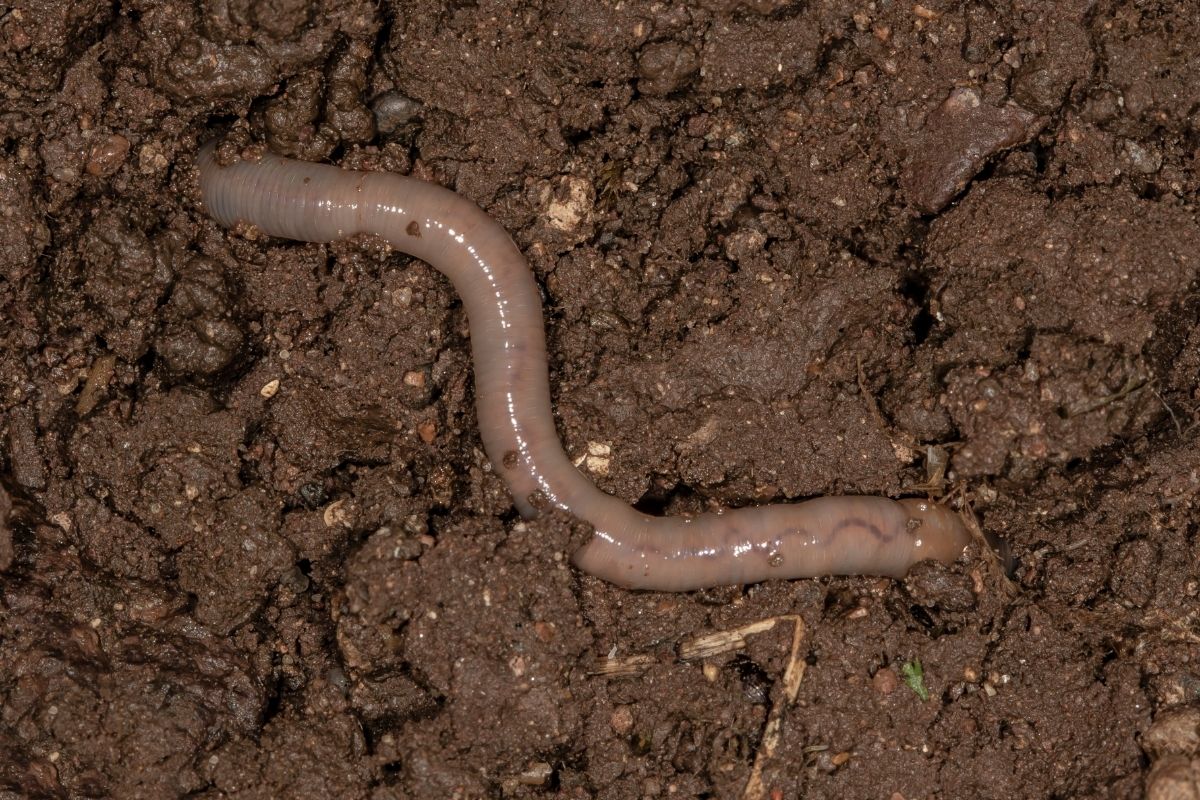
Lastly, earthworms are small worms that tend to make tiny noticeable holes in the soil during the spring and summer months when the ground is typically moist.
Earthworm activity is obvious because the holes will be smaller than nearly anything else, and there will be tiny piles of debris right next to each.
Solution: While these little holes may cause an eyesore, killing earthworms is definitely not advised. These worms are beneficial to your soil and play a big part in the ecosystem. If the remnant really bothers you, keep the location dry and simply rake the access dirt away.
How to Fill Lawn Holes Easily
Filling small holes by simply adding soil is one way of covering up animal holes. However, if the holes are larger, you will have to lift the dirt and pack soil into the empty spaces.
As mentioned above, animals that like to tunnel can cause significant structural damage to your yard, making it a little trickier to fix the problem.
Add soil
Adding soil is probably the easiest way to fill in smaller holes created by bees, chipmunks, and squirrels.
The best way to fill in these specific holes is to use a heavier material in order to deter the animals from returning and digging the dirt right back out. A great option for filling these holes includes cat litter, tiny gravel, and heavy clay soil.
Lift the Dirt Up and Away From the Location
Some of the bigger problems may require a few more steps to get your lawn back into pristine condition. Here are some steps to take if simply adding soil won’t help your situation:
- Use a flat shovel to lift up the sunken or destroyed grass area.
- Next, cut these areas into a one-foot square space using a shovel, making it easier to work with.
- Fill the empty space with fresh, clean dirt.
- Replace the grass you lifted on top of the new soil.
- Use a roller, or press down with your foot, on the squares, compacting and leveling them out.
Lay Grass Seed in Areas that Need it
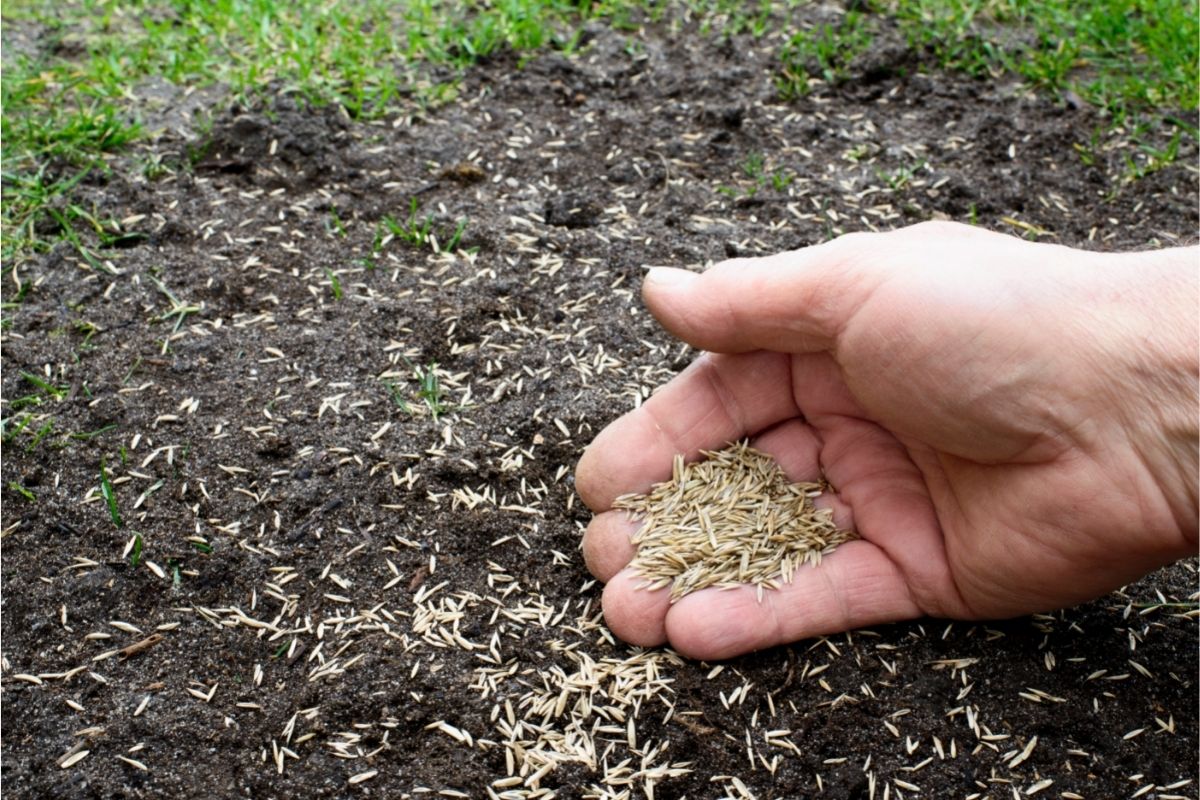
Lay grass seed down if the location of the hole is significant. Due to animal activity and the steps needed to fix the issue, your grass and its growth might end up suffering and will require repairs.
Dig a V in the Soil
If you don’t have a large area to cover but still need to raise the soil to get underneath it, you can always use a shovel to dig a V in the grass.
Step on the shovel and sink it into the ground, creating a V shape around the hole; lift the soil up, fill it in with clean dirt; then, lay the soil back down, pressing firmly on the area to create a flat surface.
Final Thoughts
There is no getting away from nature. While none of these creatures mean to cause any harm, we know how frustrating it is to find these annoying holes in your beautiful lawn.
Hopefully, next time you find small gaps in your backyard, you can reference this article to locate the issue and solve the problem.
